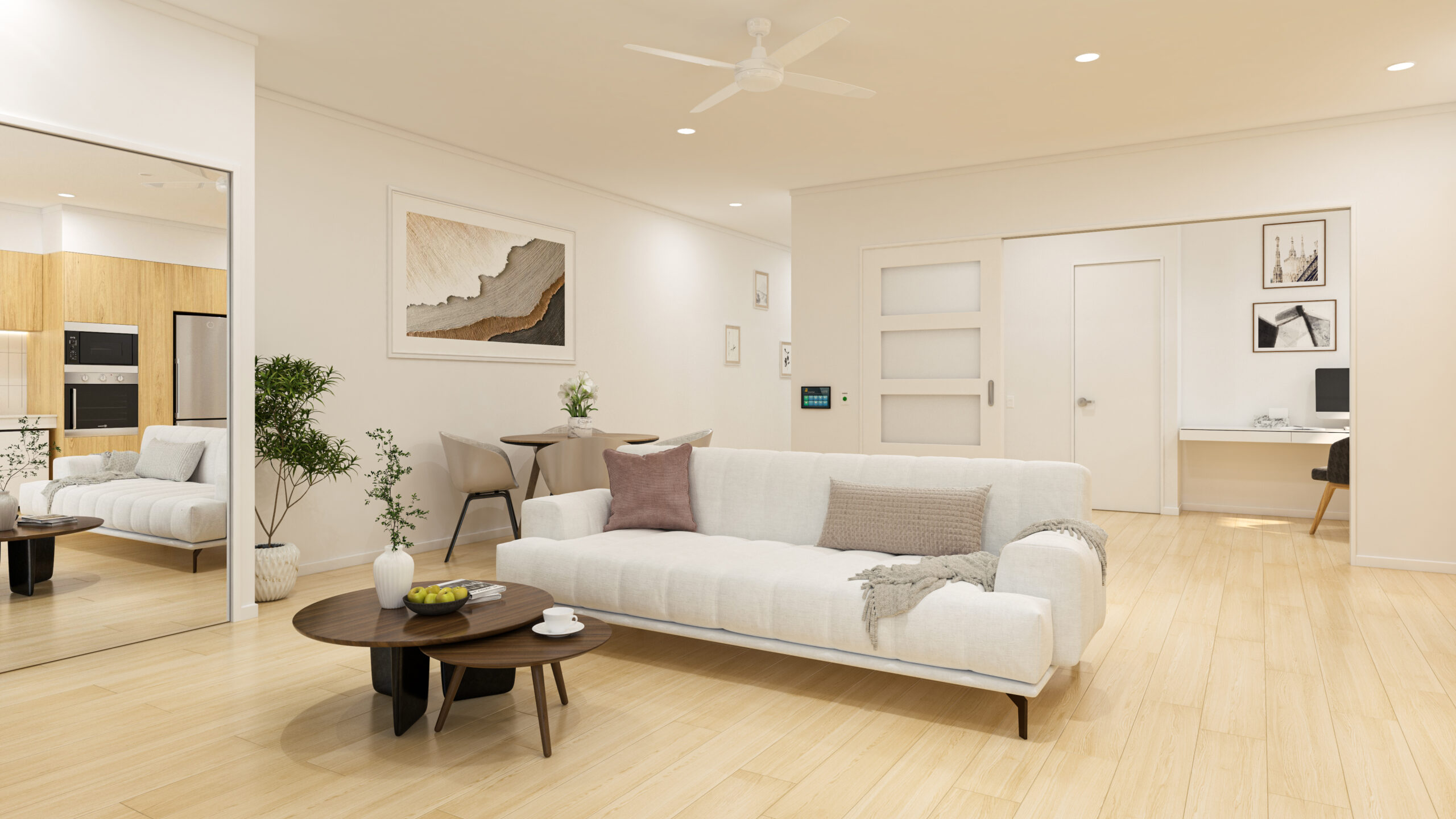At AHA, home design is more than blueprints and building approvals – it’s a continuous, evolutionary process with the needs of our residents at its heart. Designing homes for people living with disabilities is not just about meeting regulatory requirements; it’s about enhancing lives, improving independence and fostering a sense of belonging.
AHA’s unwavering commitment to an ongoing, co-design process with the invaluable input of tenants ensures our homes feature design aspects that make a real difference in the lives of people living with disability. As we embark on new design challenges and exciting projects, AHA continues to strive towards inclusive, functional, and aesthetically pleasing housing options for people with high physical support needs.
Here’s how we do it…
The Weekly Ritual
At AHA, designing homes is not a one-time event; it’s a weekly ritual. Every Friday morning the entire team gathers for a project and design meeting, including the design manager, project and construction manager, customer, and operations team, and all of our company directors. This dedicated time ensures that design remains a priority and an ongoing process, rather than a ‘set and forget’ application.
Tenant Co-Design
AHA believes in involving tenants in the design review and feedback process, who possess first-hand experience of how our homes feel and operate. Once the AHA executive team has reached a point in the process where we feel the home design is close to being finalised, we engage with a group of our tenants for design feedback based on their individual lived experience. This inclusive approach ensures that our Specialist Disability Accommodation (SDA) caters to the unique needs and preferences of the people who call them home.
Lived Experience
Having AHA Founder Perry Cross AM living with quadriplegia and residing in an AHA-designed home provides us with intimate insights into the challenges and barriers to independent living. Perry offers an authentic understanding of what functional and supportive design looks and feels like, bridging the gap between theory and real-life application.
Having Perry’s lived experience to guide us is an advantage in all aspects of AHA’s activities.
A Balancing Act
AHA homes are thoughtfully designed with a tandem and juxtaposed approach.
On one hand, the design aims to seamlessly support individuals with disabilities, accommodating their functional impairments and accessibility requirements while addressing their high support needs. On the other hand, AHA homes are designed to not look like typical disability accommodation. Instead, aesthetics are carefully considered to create contemporary homes that blend harmoniously into the community.
Always Evolving
AHA’s journey started with a simple yet profound challenge – finding a better home solution for our founder, Perry Cross. Perry’s housing needs led to the creation of apartment-style SDA however, recent projects have seen us explore villa-style homes, requiring a unique design approach. AHA shifted from transposing apartment floor plans to villas, and an entirely new design perspective emerged.
On the Horizon
As AHA prepares to launch the Urraween Village supported living community in Hervey Bay, we are excited to reveal our evolved design philosophy. This new design approach features reconsidered floor plans, room orientation, integration with outdoor spaces and the infusion of natural light. It’s a testament to AHA’s dedication to continuous improvement in creating homes that are both functional and beautiful.
You can see our new villa design here or enquire about living at Urraween Village here.
